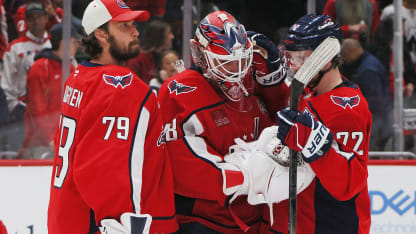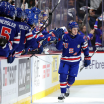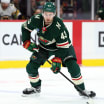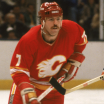The Washington Capitals were eliminated from the Stanley Cup Playoffs by the Carolina Hurricanes with a 3-1 loss in Game 5 of the best-of-7 Eastern Conference Second Round at Capital One Arena in Washington on Thursday.
The Capitals (51-22-9) became the first team in the NHL to clinch a playoff berth this season on March 20 and finished first in the Eastern Conference after being the last team to qualify last season. Washington defeated the Montreal Canadiens in five games in the first round for its first postseason series victory since it won the Stanley Cup in 2018.
The Capitals managed only a 3-1 win in Game 2 against the Hurricanes before losing the final three games of the series.
The skinny
Potential unrestricted free agents: Nicklas Backstrom, F; Anthony Beauvillier, F; Lars Eller, F; Andrew Mangiapane, F; T.J. Oshie, F; Taylor Raddysh, F; Ethan Bear, D; Hunter Shepard, G
Potential restricted free agents: Hendrix Lapierre, F; Alexander Alexeyev, D
Potential 2025 Draft picks: 5
Here are five reasons the Capitals were eliminated:
1. Trouble getting out of defensive zone
A lot of Washington's struggles in the series began here. The Capitals' inability to execute clean breakouts consistently against the incessant pressure of the Hurricanes' forecheck, particularly in the first four games, led to sustained shifts in the defensive zone and, sometimes, goals against. A prime example came in Carolina's first goal in its 5-2 win in Game 4 on Monday. After winning the defensive-zone face-off, Washington had four chances to get the puck over the blue line and could not. Shayne Gostisbehere eventually scored to give Carolina a 1-0 lead.
When the Capitals were able to clear the puck from the defensive zone, they often would turn it over in the neutral zone and the process would start over again or their players would have little energy left for pursuing offense. Washington did a much better job with its breakouts and creating offensive zone time in Game 5 but still managed only one goal.
The Hurricanes outshot the Capitals 116-76 at 5-on-5 and had a 317-199 advantage in 5-on-5 shot attempts in the series.
2. Offensive struggles
Having less offensive-zone time because they were too busy defending contributed to this, but the Capitals also weren't able to convert enough of the scoring chances they did generate. They managed only seven goals in the five games after they were second in the NHL during the regular season in scoring 3.49 goals per game.
The Capitals scored just one goal on 31 high-danger shots on goal in the series, according to NHL EDGE Stats, while the Hurricanes scored on four of their 34 high-danger shots. Washington scored just four 5-on-5 goals in the series.
After leading the Capitals with nine points (two goals, seven assists) in the first round, Dylan Strome had two assists against the Hurricanes. After scoring a team-high four goals and getting five total points in the first round, Alex Ovechkin was limited to one -- a 5-on-3 power-play goal in Game 4 -- by the Hurricanes.
Tom Wilson also had five points (two goals, three assists) in the first round and just two (one goal, one assist) against Carolina. Connor McMichael dropped from five points (three goals, two assists) in the first round to one (a goal in Game 2) against the Hurricanes. Anthony Beauvillier had one point, Washington's lone goal in Game 5, against Carolina after getting five (one goal, four assists) against Montreal. Pierre-Luc Dubois, who had 66 points (20 goals, 46 assists) in the regular season, had one assist in the series.
Andersen was a difference maker, outplaying Capitals goalie Logan Thompson, who sagged later in the series. Andersen stopped 30 of the Capitals' 31 high-danger shots on goal and leads the NHL with a .937 save percentage on all shots and a .923 save percentage on high-danger shots in the playoffs, according to NHL EDGE Stats.
Andersen wasn't tested a lot, but he came through when the Hurricanes needed him, particularly when the Capitals were controlling play early in Games 3 and 4 and in the third period of Game 5. Andersen stopped all 10 Washington shots in the third period of Game 5, which was tied 1-1 until Andrei Svechnikov's goal with 1:59 remaining.
Thompson allowed 10 goals on 85 shots (.882 save percentage) in the final three games after stopping 58 of 61 shots (.951) in the first two.
4. Special teams
The Hurricanes were 3-for-13 (23.1 percent) on the power play in the series and the Capitals were 2-for-15 (13.3 percent). More important than the number of power-play goals was the timeliness of the goals and missed opportunities.
John Carlson's power-play goal in the third period of Game 2 turned out to be game-winner for the Capitals, but they were unable to convert on some other big opportunities later in the series. Washington had a first-period power play when it was controlling play early in Game 3 and managed one shot on goal. Carolina later scored on each of its two man-advantage chances in a 4-0 victory.
In Game 4, the Capitals were trailing 1-0 when they had a four-minute man-advantage on Jordan Martinook's high-sticking double minor with 3:36 left in the first period and were outshot 2-0 during it. Then, Seth Jarvis scored less than a minute after the power play expired to increase the Hurricanes lead to 2-0.
5. Hurricanes were deeper
Carolina had 11 different players score goals, led by Svechnikov with three, including at least one from each of its four lines, and 16 players get at least one point in the series, including 13 with multiple points. Washington had seven players score goals, none with more than one, and 11 get at least one point. Five had multiple points, but none had more than two. The Hurricanes had three defensemen score (Gostisbehere, Jaccob Slavin, Sean Walker) and five defensemen with at least one point.



















